51 Huntsman Spider Portraits from Singapore – Happy 51st Birthday!
Singapore celebrates her 51st birthday today, so here’s a tiny collection of close-ups of one of the most majestic spider families in Singapore – the Huntsman Spiders (Sparassidae)!
I have over 1200 photos of huntsman spiders in my Sparassidae Flickr collection, so I thought that finding shots of their faces would be easy-peasy. Turned out that the process of short-listing would never be perfect and many shots were dropped for better variety in this collection of 51 huntsman portraits. These photos are from a collection spanning 8 years of various degrees of image quality while I kept changing my macro equipment setup. Searching and taking photos of these sparassids is like real life Pokemon Go, except that the Pokedex for spiders is almost infinitely larger and more challenging!
Please enjoy these portraits from the jungles of Singapore, and have a happy 51st birthday Singapore!
For those who have been asking, you can purchase a large print of this poster here. I don’t profit much from these prints, but any proceeds would go into producing more photos and posters.
p/s: While considerable effort was made to identify the spiders from the photos, accurate species identification was not possible due to the lack of detailed specimen examination. Even the genus identification is not reliable, so please do not use this list for spider identification reference as many important characters are not visible in these photos.
Huntsman spider (Gnathopalystes sp.)
Likely to be the male, as we’ve seen a pair together before.
Huntsman spider (Gnathopalystes sp.)
Probably the corresponding female.
Huntsman spider (Gnathopalystes sp.)
After successful mating attempts, this would be the resulting ice cream scoop of an egg sac.
Huntsman spider (Gnathopalystes sp.)
A stunning gray specimen wet from the torrential rain.
Huntsman spider (Gnathopalystes sp.)
This was much drier, likely to be the same species as above.
Huntsman spider (Gnathopalystes sp.)
Some specimens had a slight purple tint on their bodies.
Huntsman spider (Gnathopalystes sp.)
Some had huge anterior lateral eyes with a light orangey body.
Huntsman spider (Gnathopalystes sp.)
Another specimen with a lighter tone of orange.
Huntsman spider (Heteropoda sp.)
Heteropoda lunula is probably the largest and stoutest sparassid in Singapore, but this was a juvenile and typically found in the north-eastern parts of Singapore.Huntsman spider (Heteropoda sp.)
Heteropoda boiei grows up to extensive sizes with super long legs. When the cheliceral hair drops, it reveals a beautiful iridescent surface beneath.Huntsman spider (Heteropoda sp.)
Documented several of these – this had a dark clypeus.
Huntsman spider (Heteropoda sp.)
Not sure which are adults, but several slight variations could be spotted.
Huntsman spider (Heteropoda sp.)
A very old photo of Heteropoda davidbowie. Quite a common sight in Singapore, such that I’ve already stopped taking close ups of them in recent years. Need to remind myself to take better quality shots!
Huntsman spider (Heteropoda sp.)
Probably the male, with distinct red markings on the cephalothorax.
Huntsman spider (Heteropoda sp.)
One of the most beautiful specimens of this species that I’ve ever encountered.
Huntsman spider (Heteropoda sp.)
Probably Heteropoda tetrica, occurs in various colour morphs, including red or maroon ones!
Huntsman spider (Heteropoda sp.)
Also close to Heteropoda tetrica, possibly a different colour morphy. The black chelicerae appears to be consistent though.
Huntsman spider (Heteropoda sp.)
Classic male Heteropoda venatoria, one of the most common huntsman spiders on our forest floors and foliage.
Huntsman spider (Heteropoda sp.)
Close to the male Heteropoda tetrica, but not too sure.
Huntsman spider (Heteropoda sp.)
This is often assumed to be the female Heteropoda venatoria with the white band across the clypeus.
Huntsman spider (Heteropoda sp.)
Another specimen with the white band across the clypeus.
Huntsman spider (Heteropoda sp.)
Another example, with all legs on one side already lost but still stoutly protecting her egg sac.
Huntsman spider (Heteropoda sp.)
One of the frequent inhabitants of the forest floor. I’ve seen some pretty large specimens of this over the years.
Huntsman spider (Heteropoda sp.)
The female holds her egg sac beneath her cephalothorax using her chelicerae and supported by pedipalps.
Huntsman spider (Heteropoda sp.)
A slightly different variation.
Huntsman spider (Heteropoda sp.)
This charming specimen has a purple carapace and front legs, but is typically recognized by the markings on the posterior end of both the abdomen and cephalothorax.
Huntsman spider (Heteropoda sp.)
Uncommon species with vivid graduating tones on its legs.
Huntsman spider (Heteropoda sp.)
Tiny species found on the forest floor, at just about 1cm, unlike the other huntsman spiders above.
Huntsman spider (Heteropoda sp.)
Another small species, but with a brighter colour and slightly larger.
Huntsman spider (Heteropoda sp.)
While the chelicerae are clutching onto the egg sac, the mother lives without food until the spiderlings hatch.
Huntsman spider (Heteropoda sp.)
One of my many unplaced sparassids.
Huntsman spider (Heteropoda sp.)
Huntsman spiders are adept hunters, and I’ve witnessed them devouring other larger spiders such as ctenids and nemesiids.
Huntsman spider (Heteropoda sp.)
Of course, when winged termites are in season, they would be really happy with their catches.
Huntsman spider (Olios sp.)
Uncertain with the ID of this genus, sometimes confused with Thelcticopis. Going to check on the literature.
Huntsman spider (Olios sp.)
Probably a juvenile.
Huntsman spider (Olios sp.)
These tend to be very stable and unwilling to move.
Huntsman spider (Pandercetes sp.)
Very common spider on tree trunks and rock surfaces.
Huntsman spider (Pandercetes sp.)
Typically very skittish, but tends to remain on the tree trunk so that we have multiple chances at going close to it.
Huntsman spider (Pandercetes sp.)
An uncommon species with thick tufts of hairs on the legs, and positions them longitudinally unlike the species above.
Huntsman spider (Pandercetes sp.)
Another incredible specimen. The tufts of hairs can even be seen on its pedipalps! Elevated ocular region is also very pronounced in this angle.
Huntsman spider (Pandercetes sp.)
A rarely seen male, albeit a rather faded one.
Huntsman spider (Pandercetes sp.)
One of the first of this species that I’ve ever seen. It was uncharacteristically found on a leaf, and I had to stitch many shots to get the incredibly stunning dorsal view.
Huntsman spider (Thelcticopis sp.)
Used to be classified under Clubionidae, Seramba is now a junior synonym of Thelcticopis.
Huntsman spider (Thelcticopis sp.)
Several variations of this species can be spotted in the foliage. It typically hides in between leaves or in folded leaves woven together with silk.
Huntsman spider (Thelcticopis sp.)
A large male with palps larger than its chelicerae – the bite is also known to be very painful.
Huntsman spider (Thelcticopis sp.)
Another mature male.
Huntsman spider (Thelcticopis sp.)
A female having her breakfast.
Huntsman spider (Thelcticopis sp.)
Sub-adult male, before the complex palpal structures can be seen.
Huntsman spider (Sparassidae)
There are too many unidentified sparassids in my collection, and this is just a small collection from over a thousand photos.
Huntsman spider (Sparassidae)
Initially thought to be Gnathopalystes but now back to “not sure at all”.
Huntsman spider (Sparassidae)
Similar to the above specimen but with bright yellow hair on the chelicerae.
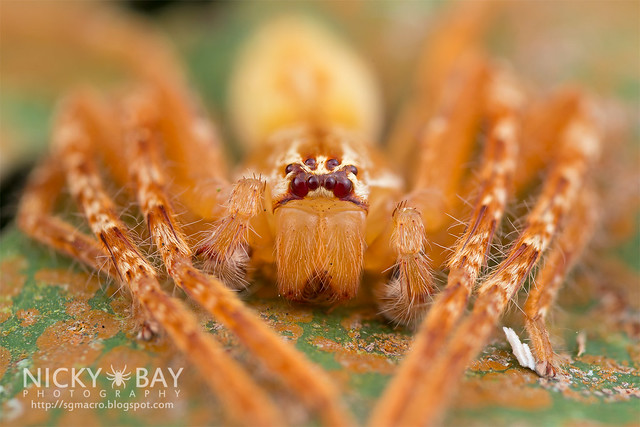
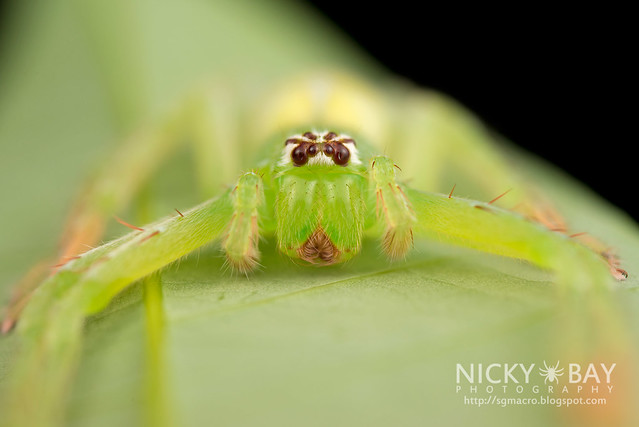
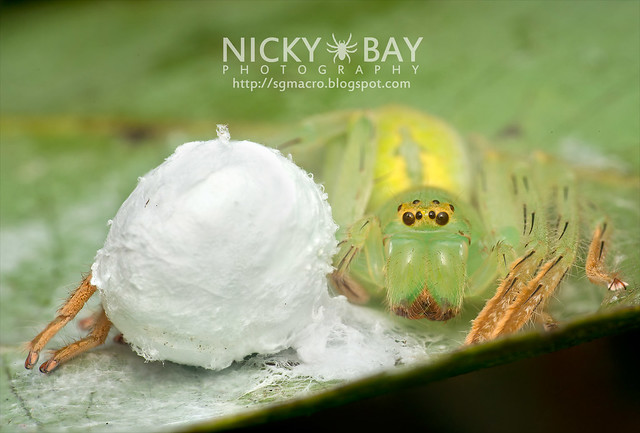
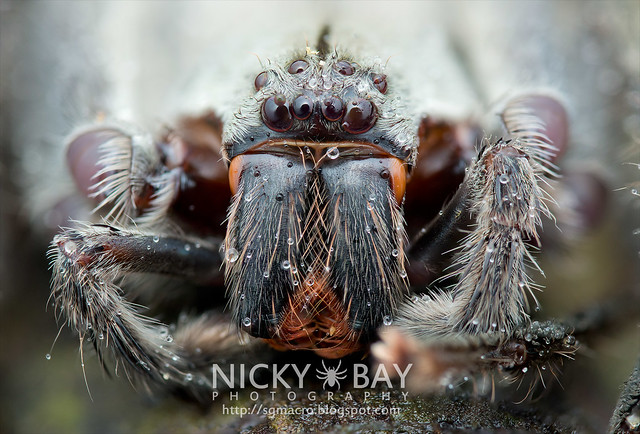
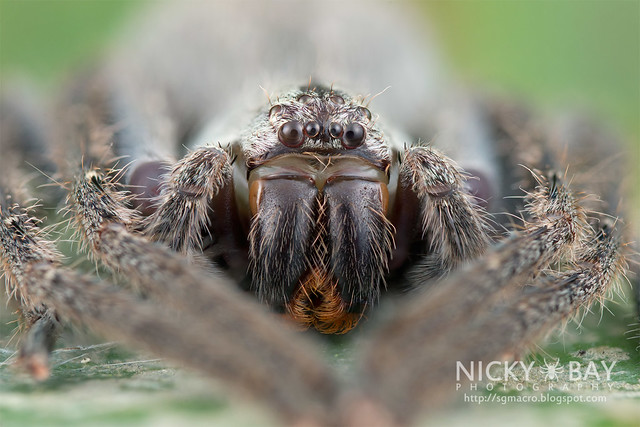
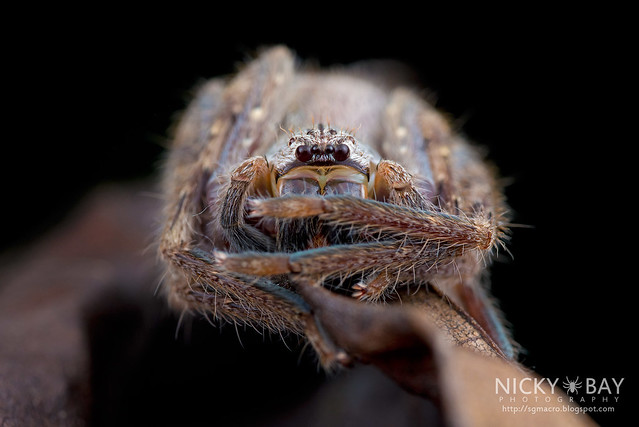
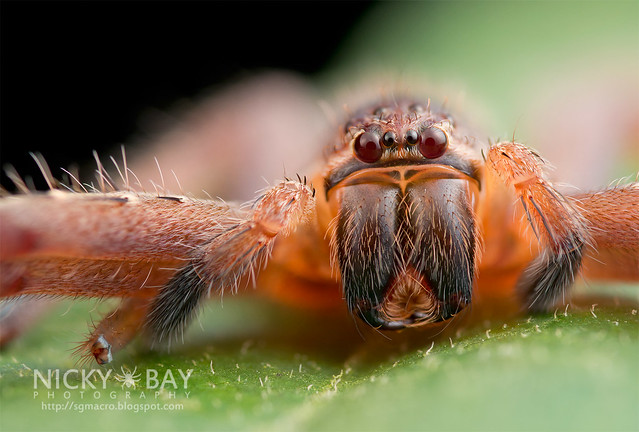
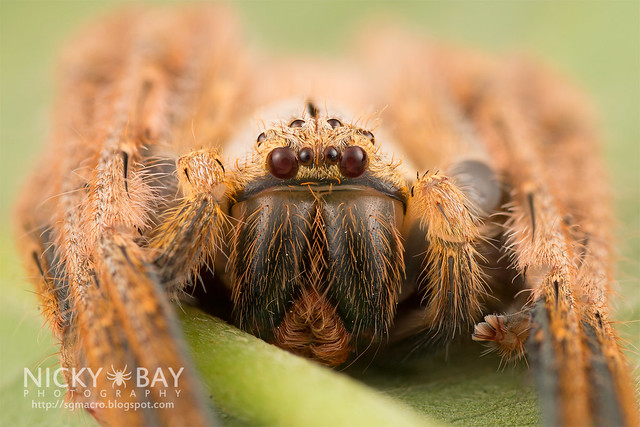
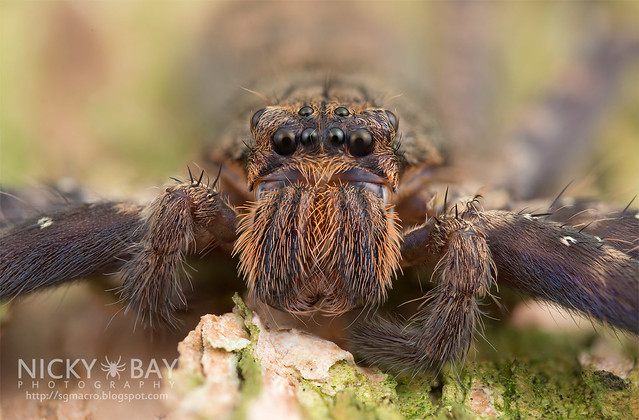
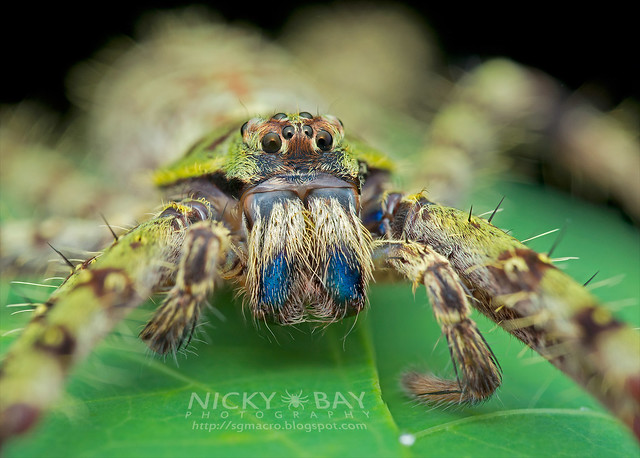
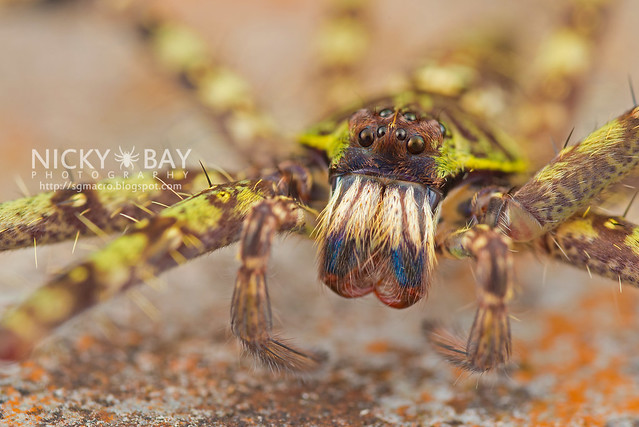
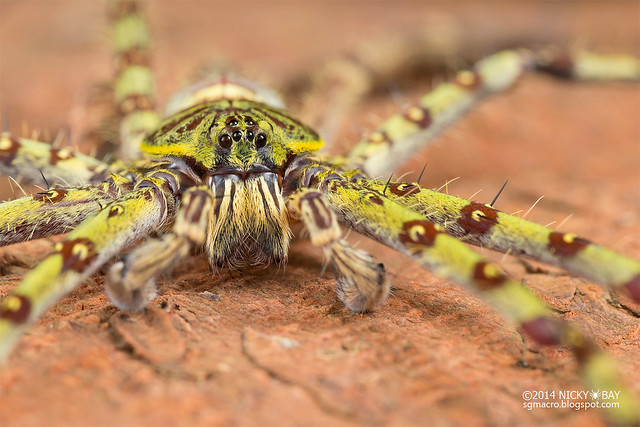
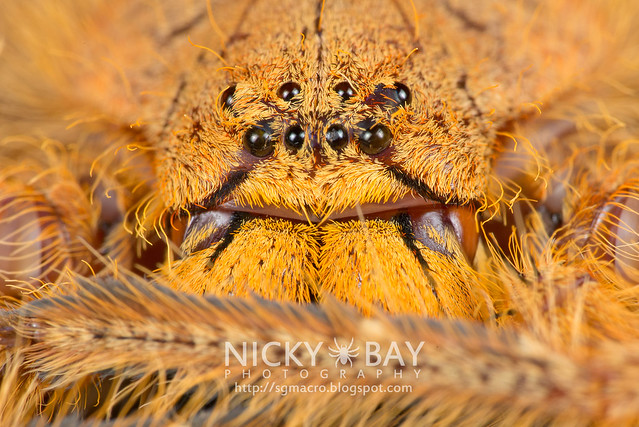
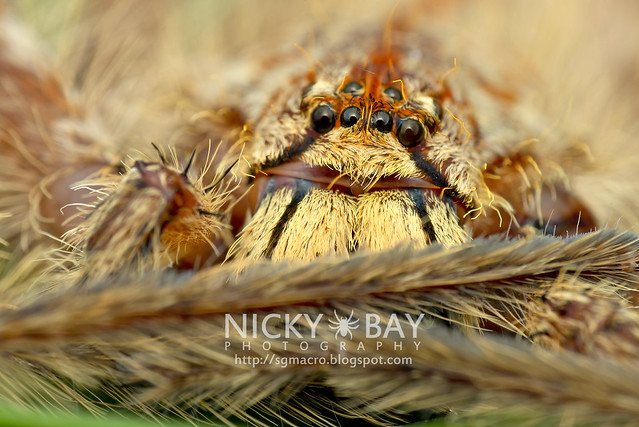
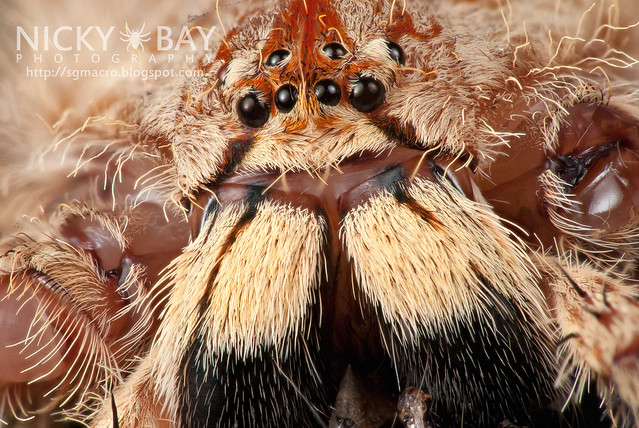
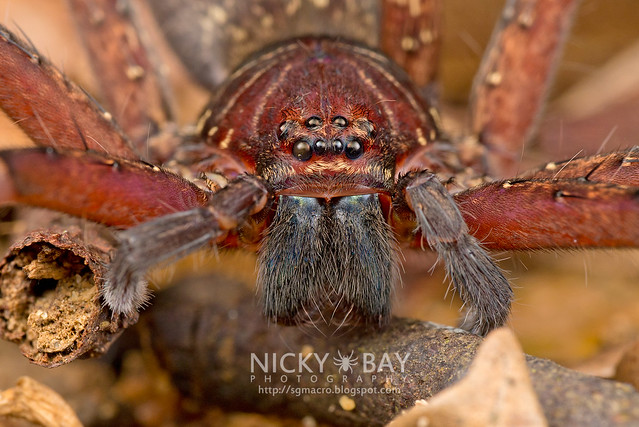
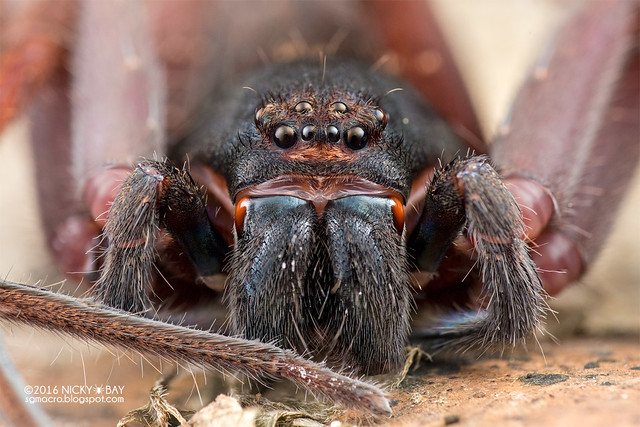
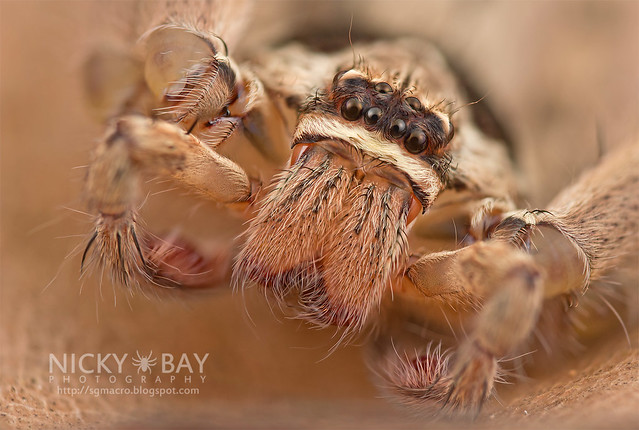
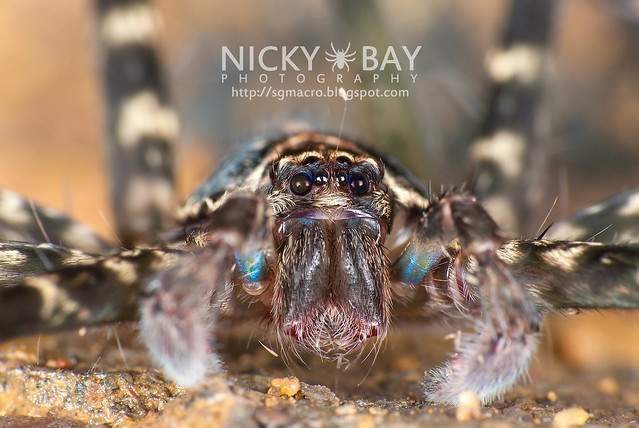
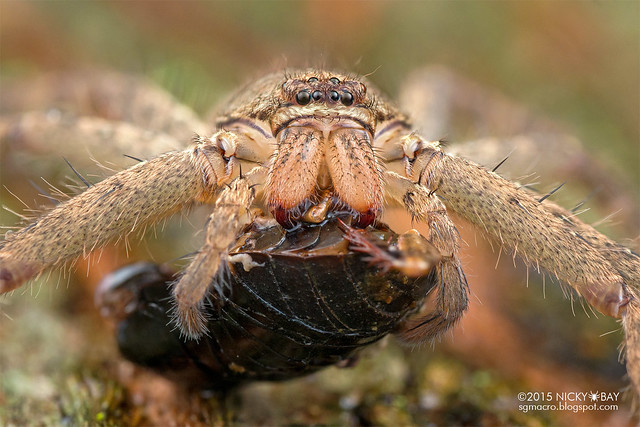
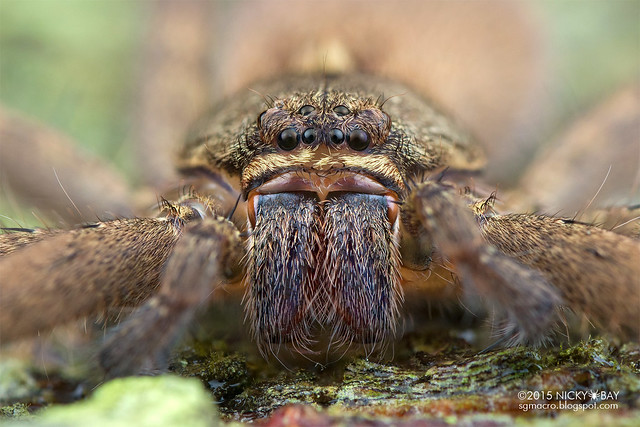
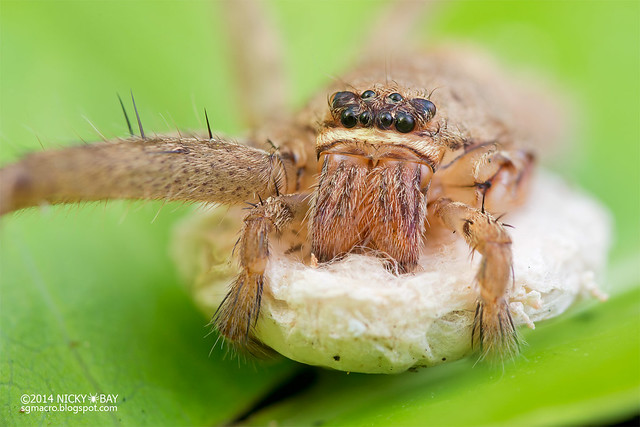
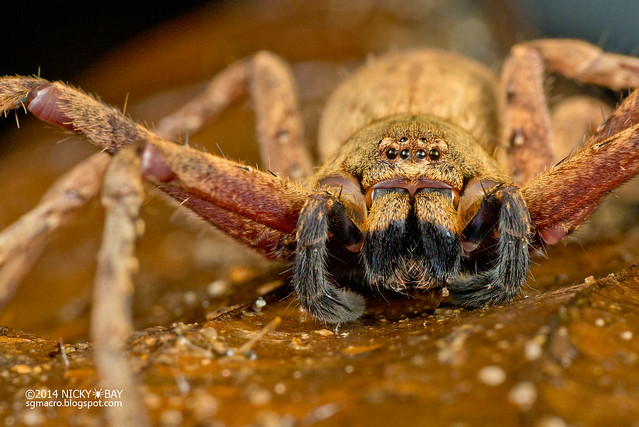
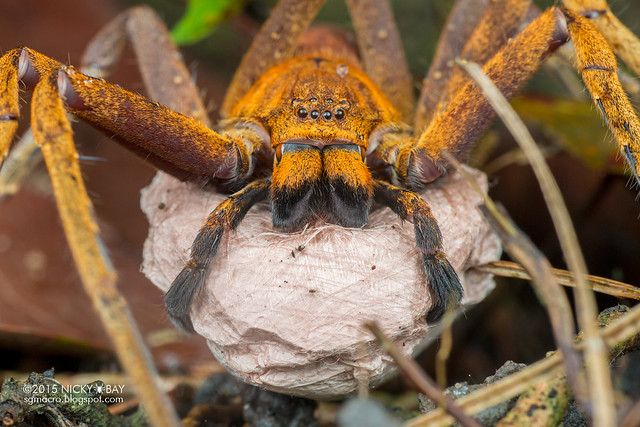
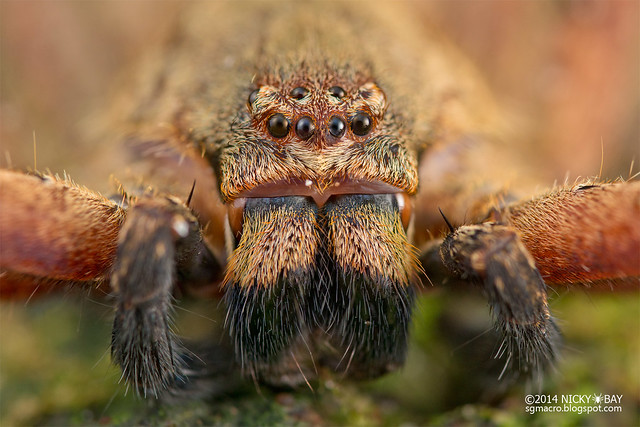
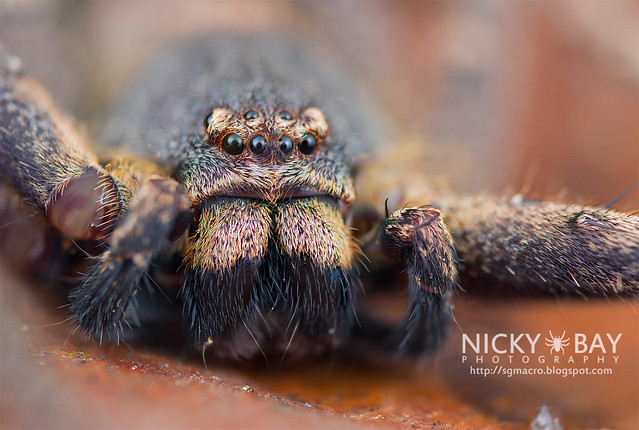
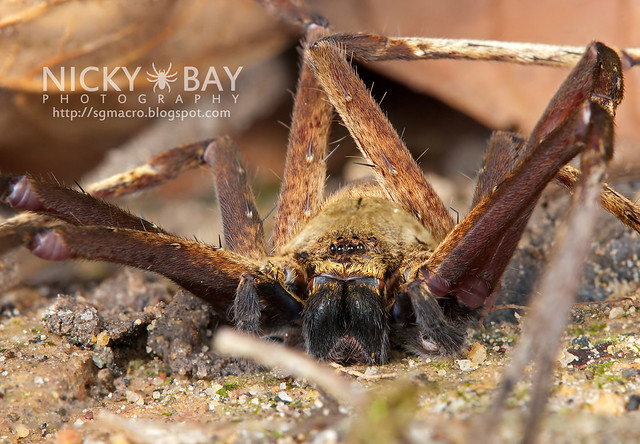

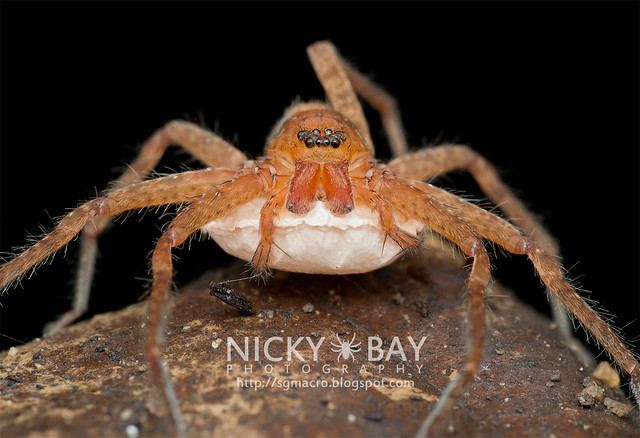
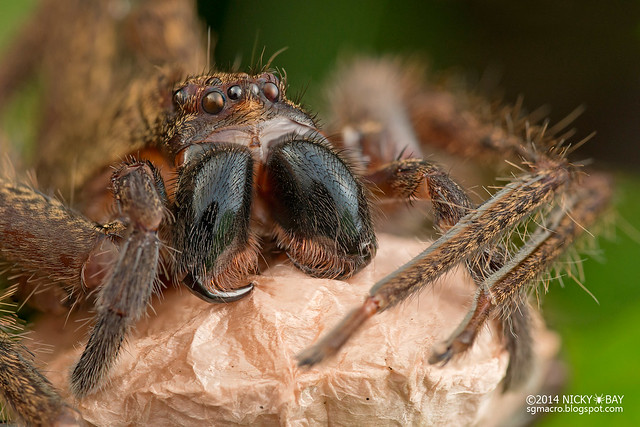
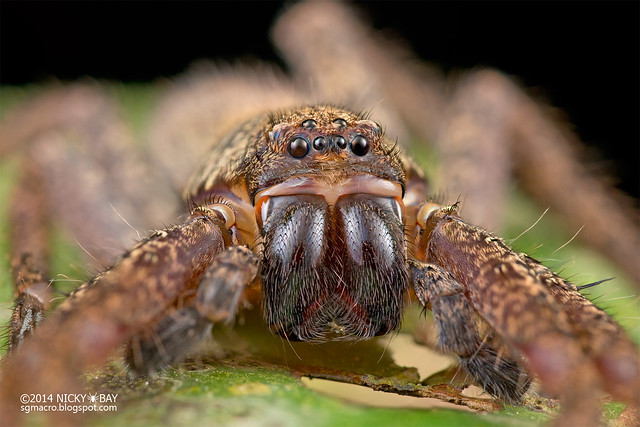
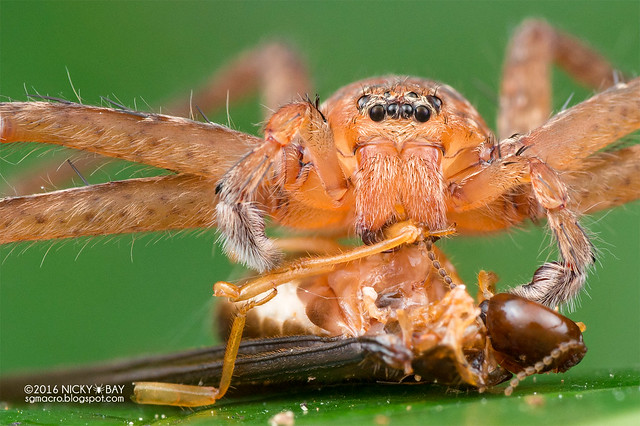
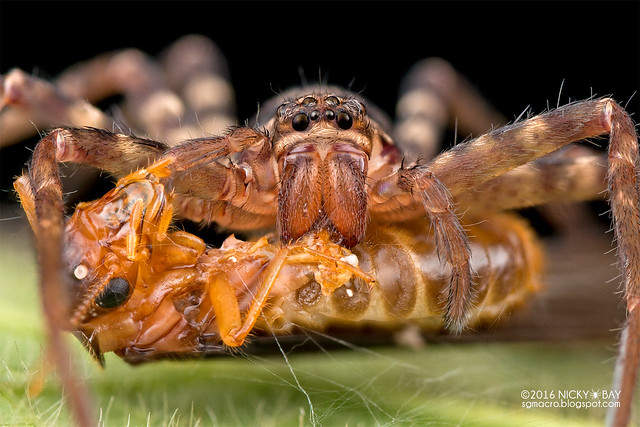
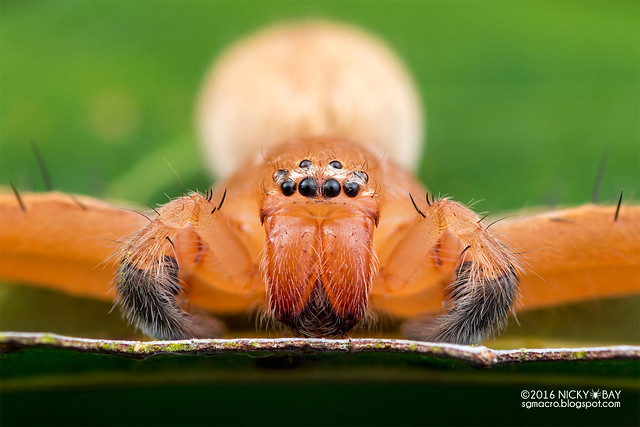

















I have over 1200 photos in my Sparassidae Flickr album, so this is just a small selection of portraits from Singapore. As specimens were not collected, identification became quite difficult and potentially inaccurate when done based solely on photographs. Nevertheless, this would be one of the most comprehensive collections of sparassid portraits from Singapore, if not the only one.
If you liked this series, check out another collage for 50 Jumping Spiders that I made for Singapore’s 50th birthday last year.



















